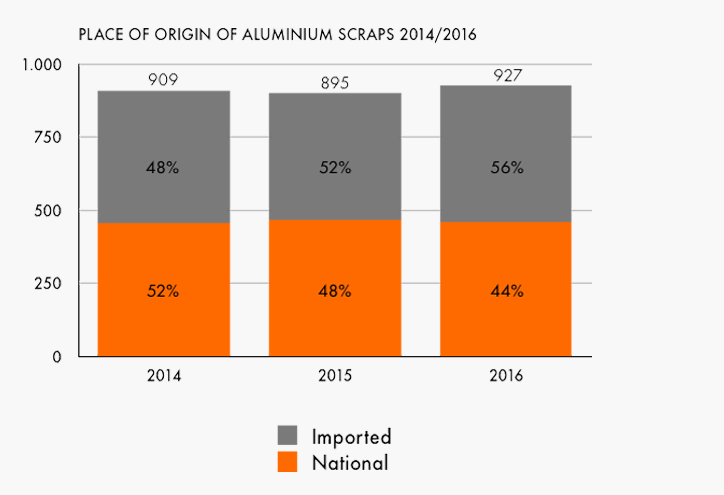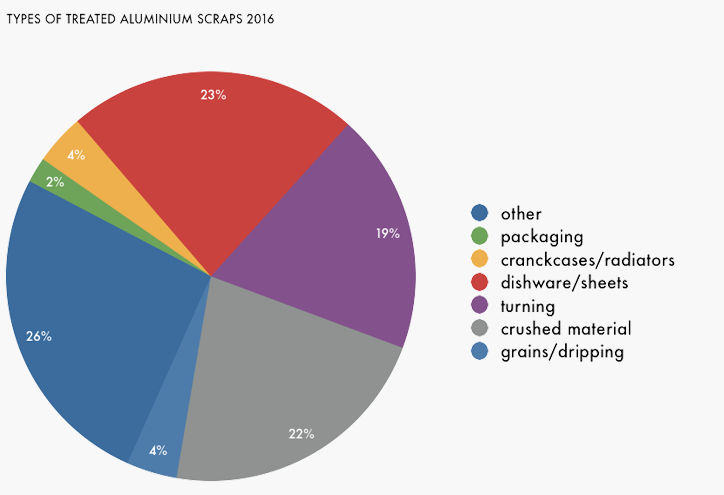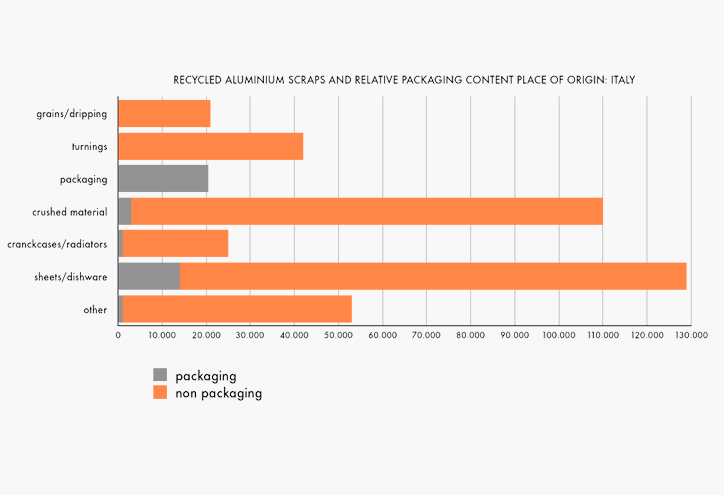Below is more detailed information on the Italian scenario of aluminium waste recycling, i.e. aluminium of all kinds (not just packaging) that has reached the end of its useful life.
Recycled aluminium is obtained from processed and melted pre-consumer scraps (mainly production waste) and post-consumer waste (i.e. items that have reached the end of their useful life).
It is relatively easy to recycle pre-consumer aluminium scraps because they are relatively clean and their composition relatively certain. On the contrary, recycling post-consumer aluminium requires special processes and technologies. Often a careful selection phase is necessary before recycling.
The total quantity of aluminium waste recycled in 2016 was 927 tons.
The total quantities were assessed according to:
- their origin, considering the aluminium from Italy and imported materials;
- their belonging to the pre-consumer category (scraps from the production system) or post-consumer category (packaging, demolition material, cars, WEEE etc)

With regard to the origin of the processed scraps, data shows that in 2016 the quota from Italy decreased (in terms of percentage as well) compared to the year before, whereas the absolute value of the imported quota was stable (increasing in percentage).

Essentially there has been a decrease in the availability of pre-consumer scraps produced in Italy (with stable exports) whereas imported amounts increased. This scenario is increasingly characterised by the gradual rationalisation of industrial productions, which tend to reduce the amount of scrap material, combined with the delocalisation of production processes.
The stabilisation of exports is in line with the dynamics described above.
The graph below shows the types of scraps materials recycled in 2016, classified according to the waste classes listed in Italian and European legislation.

Considering that the aims of aluminium packaging recycling are referred to packaging waste generated in Italy, the quantities and types of scraps of Italian origin have been monitored. Special attention was paid to the class of only post-consumer packaging (and declared as such) and the classes of mixed scraps, which contain post-consumer packaging as well.
The results of that analysis on the materials processed in 2016 are shown in the graph below.

